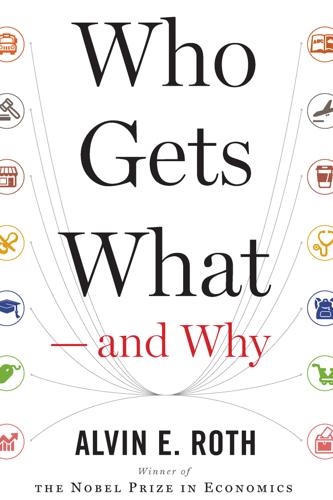
Who Gets What — and Why: The New Economics of Matchmaking and Market Design
by
Alvin E. Roth
Published 1 Jun 2015
When my wife and I bought a house that we found without a broker, the seller had already signed a contract with a broker that fixed the total brokerage fee. When it came time to close the deal, we engaged a broker from the firm Redfin, which refunds half of its share of the fee to the buyer. That is far from an efficient adaptation to a changing world, but it’s a start. Computerized Markets Although the Internet has so far failed to transform the housing market, computerized markets have, as we have seen, made enormous changes in other areas. Computers not only make markets ubiquitous and fast; they also make it possible to operate “smart markets” that depend on computational power. Neither kidney exchanges nor “package bidding” auctions would be possible if computers weren’t there to handle the gnarly calculations needed to find the best way to match lots of patient-donor pairs with one another, or to find the set of packages of spectrum licenses that will raise the most revenue at each point in the bidding.
…
Index Abdulkadiroğlu, Atila, 35, 107, 153 on school choice, 126–28, 165, 241, 243 activity rules, 187–88 advertising, targeted, 189–92 “Advice to a Young Tradesman, Written by an Old One” (Franklin), 200–201 Affordable Care Act, 224 Airbnb, 99–103, 116 algorithms Boston Public Schools, 122–28 computerized markets and, 225–26 deferred acceptance, 141–44 in Boston Public Schools system, 162–65 in New York school choice program, 155–61 for financial marketplaces, 82–89 Internet dating sites, 176–77 kidney exchange, 35–38, 39–41 for medical residencies, 136–43 Roth-Peranson, 148–49 stable outcomes from, 139–43 Alliance for Paired Donation, 44, 49 Amazon, 20–21, 22 congestion management in, 24 simplicity in, 26 American Economic Association, 174, 175 Android, 21–22 anonymity, in commodity markets, 19–20 antibiotics, 133–34 Apple, 19 iPhone, 21–22, 24 application and selection processes, 5.
…
See also information; signals and signaling cheap talk in, 176–77 costly signals in, 177–89 speed of, 99–106 competition early transactions and, 57–80 exploding offers and, 9–10 for medical school graduates, 135–36 price-based vs. speed-based, 85–88 simplicity in, 26–27 speed in, 81–99 computerized markets, 225–26 “Confessions of a Bad Apple” (Kozinski), 93 congestion, 9–10, 92–93, 99–112 commodity markets and, 17 credit cards and, 24 dangers of, 106 in economics job market, 174–75 for judicial clerkships, 91–93 kidney exchanges and, 51, 52 in limited-time markets, 80 New York City school system, 106–10, 112 in the Oklahoma Land Rush, 57–59 in restaurants, 218–20, 221 signaling and, 179 conscription, 203 contract law, 222, 225 Cook, Gareth, 126, 241 Cook, Walter, 58, 59, 80 cookies, Internet, 191–92 costly signals, 177–89.
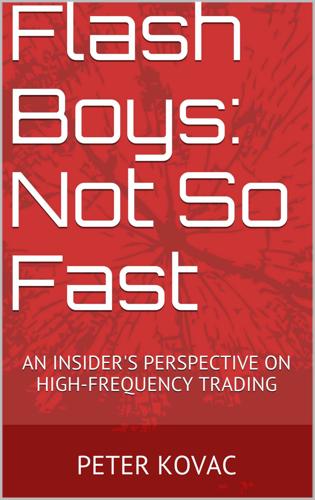
Flash Boys: Not So Fast: An Insider's Perspective on High-Frequency Trading
by
Peter Kovac
Published 10 Dec 2014
There are few better techniques to obscure an argument than to make the reader compare fractions. So, let us convert Lewis’ fractions into decimal percentages: the spread dropped from 0.0625% to 0.0100%. Put another way, Lewis tells us that the transaction costs to buy and sell your stock dropped six times lower after we moved to a computerized market. That’s a pretty powerful argument in favor of computerization. No wonder Lewis buried it under a pile of fractions, and then topped the grave with a non sequitur about liquidity.[44] Lewis doesn’t want to dwell on the possibility that high-frequency market-makers have made the trading costs of the bid-offer spread six times lower for investors.
…
Exchanges, automated or not, don’t make prices – market participants do. Presumably, then, Lewis means the automation of stock market participants caused trading costs to plummet. If he is arguing that market participants started using computers to automate trading and this resulted in narrower spreads, then he is right – and these automated, computerized market-makers sound an awful lot like high-frequency traders. It’s no coincidence that one of the original high-frequency trading firms was called Automated Trading Desk. So, yes, automation in the stock market has narrowed spreads. That’s exactly what high-frequency market-makers do. Lewis’ final fallback position is that the narrower spreads today aren’t really real, but are “an illusion.”
…
Lewis’ hypothetical examples of front-running also don’t work. Misunderstanding basic principles built-in to today’s markets, such as trade-through protection, price-time priority, and protection of order information, he conjures up scenarios that are impossible. The tricks of thirty years ago simply aren’t possible in today’s computerized markets, which automatically enforce these rules. Brokers can no longer stick a customer with an off-market price. All trades, broker or customer, must occur only at the prices set by the entire national market. Customer order information is only revealed if the customer chooses to do so. Lewis never even attempts to explain how a would-be front-runner guesses the quantity and price of a customer’s order, because he has no plausible explanation.

The Black Box Society: The Secret Algorithms That Control Money and Information
by
Frank Pasquale
Published 17 Nov 2014
The think tank Dēmos estimates that, over a lifetime, retirement account fees “can cost a median-income two-earner family nearly $155,000.”122 Investor John Bogle notes that a 2 percent fee applied over a 50-year investing lifetime would erode 63 percent of the value of an average account.123 Note, too, how the finance sector as a whole has little interest in stopping such wasteful activities. The more treacherous it becomes for outsiders to trade in the brave new world of computerized markets, the more they have to pay some knowledgeable insider a fee to fend off the piranhas. Also note here how signals about value are being transmitted. HFT’ers merely anticipate and mimic what others are doing, without exploring the underlying value of the company whose shares are being traded.
…
Here, buy and sell signals can take on a life of their own, leading to momentum trading and herding.124 Algorithmic trading can create extraordinary instability and frozen markets when split-second trading strategies interact in unexpected ways.125 Consider, for instance, the flash crash of May 6, 2010, when the stock market lost hundreds of points in a matter of minutes.126 In a report on the crash, the CFTC and SEC observed that “as liquidity completely evaporated,” trades were “executed at irrational prices as low as one penny or as high as $100,000.”127 Traders had programmed split-second algorithmic strategies to gain a competitive edge, but soon found themselves in the position of a sorcerer’s apprentice, unable to control the technology they had developed.128 Though prices returned to normal the same day, there is no guarantee future markets will be so lucky. The Computerized Market HFT is the ultimate in fi nancial self-reference, where perceptions of value come entirely from signals encoded on trading terminals. Lately, the limiting factor in fast trading the speed of light in fiber optic cables. Thus fi rms are paying to construct ultrafast cables between fi nancial centers.129 Spread Networks spent over $200 million to lay a cable between Chicago and New York-area exchanges, estimating that fi rms could make $20 billion in a year exploiting price discrepancies (lasting less than a second) between the two cities.130 Modelers have devised more extreme solutions to the time delay problem.
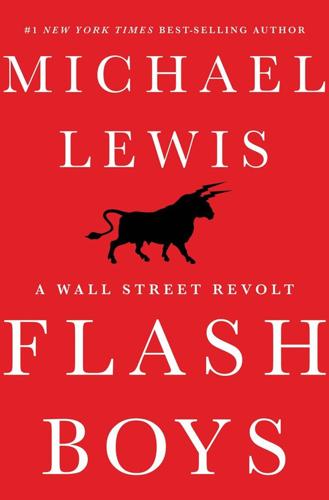
Flash Boys: A Wall Street Revolt
by
Michael Lewis
Published 30 Mar 2014
It ran as follows: Natural investors in stocks, the people who supply capital to companies, can’t find each other. The buyers and sellers of any given stock don’t show up in the market at the same time, so they needed an intermediary to bridge the gap, to buy from the seller and to sell to the buyer. The fully computerized market moved too fast for a human to intercede in it, and so the high-frequency traders had stepped in to do the job. Their importance could be inferred from their activity: In 2005 a quarter of all trades in the public stock markets were made by HFT firms; by 2008 that number had risen to 65 percent.
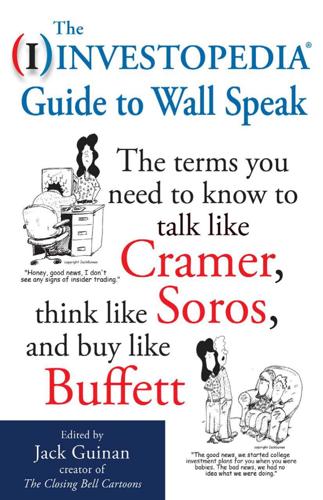
The Investopedia Guide to Wall Speak: The Terms You Need to Know to Talk Like Cramer, Think Like Soros, and Buy Like Buffett
by
Jack (edited By) Guinan
Published 27 Jul 2009
Some analysts point to the fact that naked shorting, albeit inadvertently, may help markets stay in balance by allowing negative sentiment to be reflected in certain stocks’ prices. 193 194 The Investopedia Guide to Wall Speak Related Terms: • Margin • Regulation T—Reg T • Short Squeeze • Option • Stock Option Nasdaq What Does Nasdaq Mean? A computerized market or exchange that facilitates trading by providing price quotations on more than 5,000 actively traded overthe-counter stocks. Created in 1971, the Nasdaq was the world’s first electronic stock market. Stocks on the Nasdaq traditionally are listed by using four or five letters as their ticker symbols.
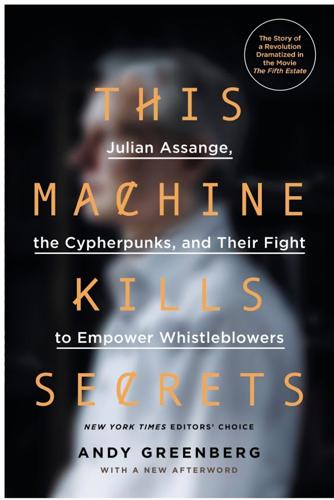
This Machine Kills Secrets: Julian Assange, the Cypherpunks, and Their Fight to Empower Whistleblowers
by
Andy Greenberg
Published 12 Sep 2012
The State will of course try to slow or halt the spread of this technology, citing national security concerns, use of the technology by drug dealers and tax evaders, and fears of societal disintegration. Many of these concerns will be valid; crypto anarchy will allow national secrets to be traded freely and will allow illicit and stolen materials to be traded. An anonymous computerized market will even make possible abhorrent markets for assassinations and extortion. Various criminal and foreign elements will be active users of CryptoNet. But this will not halt the spread of crypto anarchy. Just as the technology of printing altered and reduced the power of medieval guilds and the social power structure, so too will cryptologic methods fundamentally alter the nature of corporations and of government interference in economic transactions.
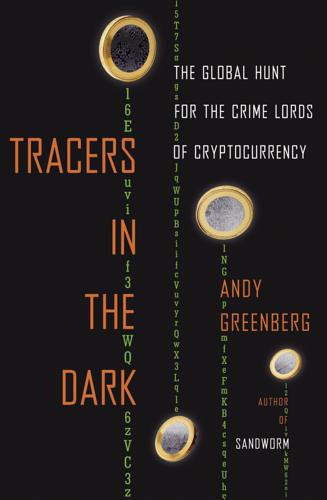
Tracers in the Dark: The Global Hunt for the Crime Lords of Cryptocurrency
by
Andy Greenberg
Published 15 Nov 2022
The State will of course try to slow or halt the spread of [encryption] technology, citing national security concerns, use of the technology by drug dealers and tax evaders, and fears of societal disintegration. Many of these concerns will be valid; crypto anarchy will allow national secrets to be traded freely and will allow illicit and stolen materials to be traded. An anonymous computerized market will even make possible abhorrent markets for assassinations and extortion. Various criminal and foreign elements will be active users of CryptoNet. But this will not halt the spread of crypto anarchy. * * * · · · By the time I read May’s words, more than two decades later, many elements of his vision had already come true: Encryption had, in fact, enabled secret, uncrackable communication for billions of ordinary people.

Surveillance Valley: The Rise of the Military-Digital Complex
by
Yasha Levine
Published 6 Feb 2018
They believed that powerful encryption and anonymity technology, combined with untraceable digital currencies, would bring a revolution that swept away government power and established a decentralized global world order based on free markets and voluntary association.56 “The State will of course try to slow or halt the spread of this technology, citing national security concerns, use of the technology by drug dealers and tax evaders, and fears of societal disintegration. Many of these concerns will be valid; crypto anarchy will allow national secrets to be traded freely and will allow illicit and stolen materials to be traded. An anonymous computerized market will even make possible abhorrent markets for assassinations and extortion,” predicted Timothy May, a bearded, pioneering engineer at Intel and one of the key founders of the cypherpunk movement, back in 1992. May proselytized his ideas with a messianic zeal. By 1994, he was predicting that a global cryptorevolution was just around the corner and that it would create a new world free of governments and centralized control.
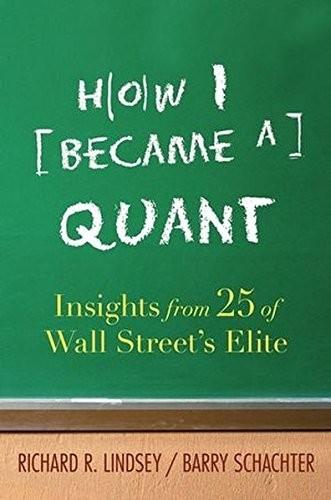
How I Became a Quant: Insights From 25 of Wall Street's Elite
by
Richard R. Lindsey
and
Barry Schachter
Published 30 Jun 2007
Evan Schulman is chairman of Upstream Technologies LLC. Before Upstream, Mr. Schulman cofounded Lattice Trading, which was acquired by State Street Global Advisors in 1996. Lattice is an advanced alternative trading system that integrates order-matching with order-routing and connects to global computerized markets. In 1975, as director of Computer Research at Keystone Funds in Boston, he completed what is generally regarded as the first equity program trade. During the 1980s, Mr. Schulman developed computerized investment and trading systems at Batterymarch Financial Management. Currently, he is a director of Net Exchange.